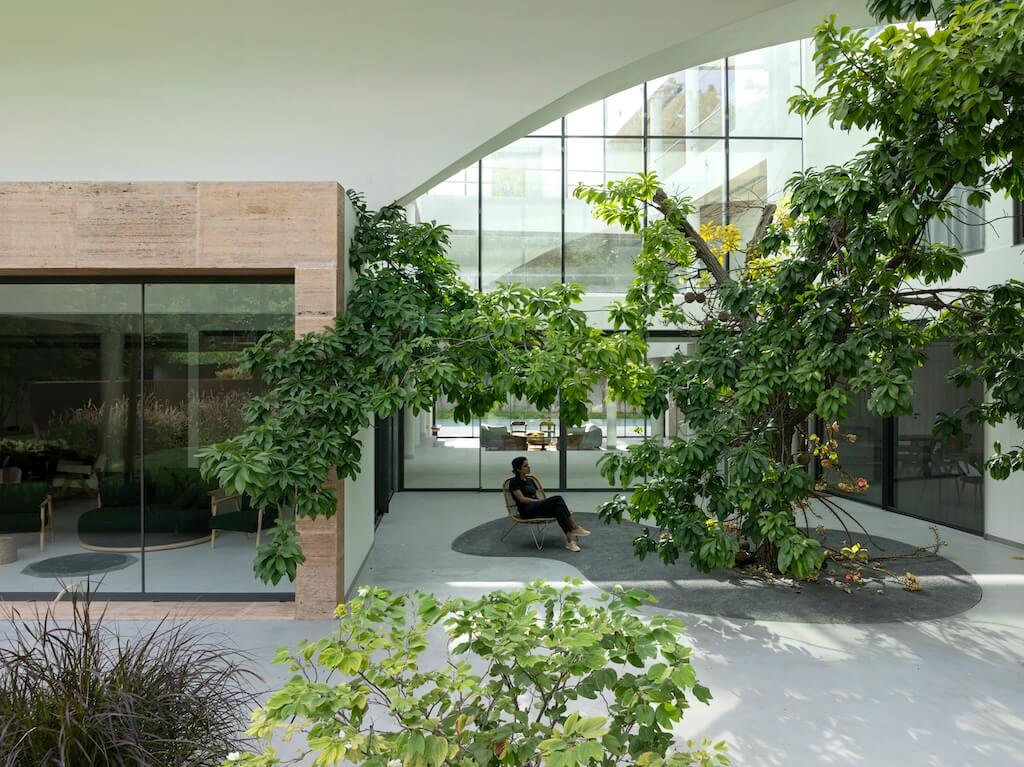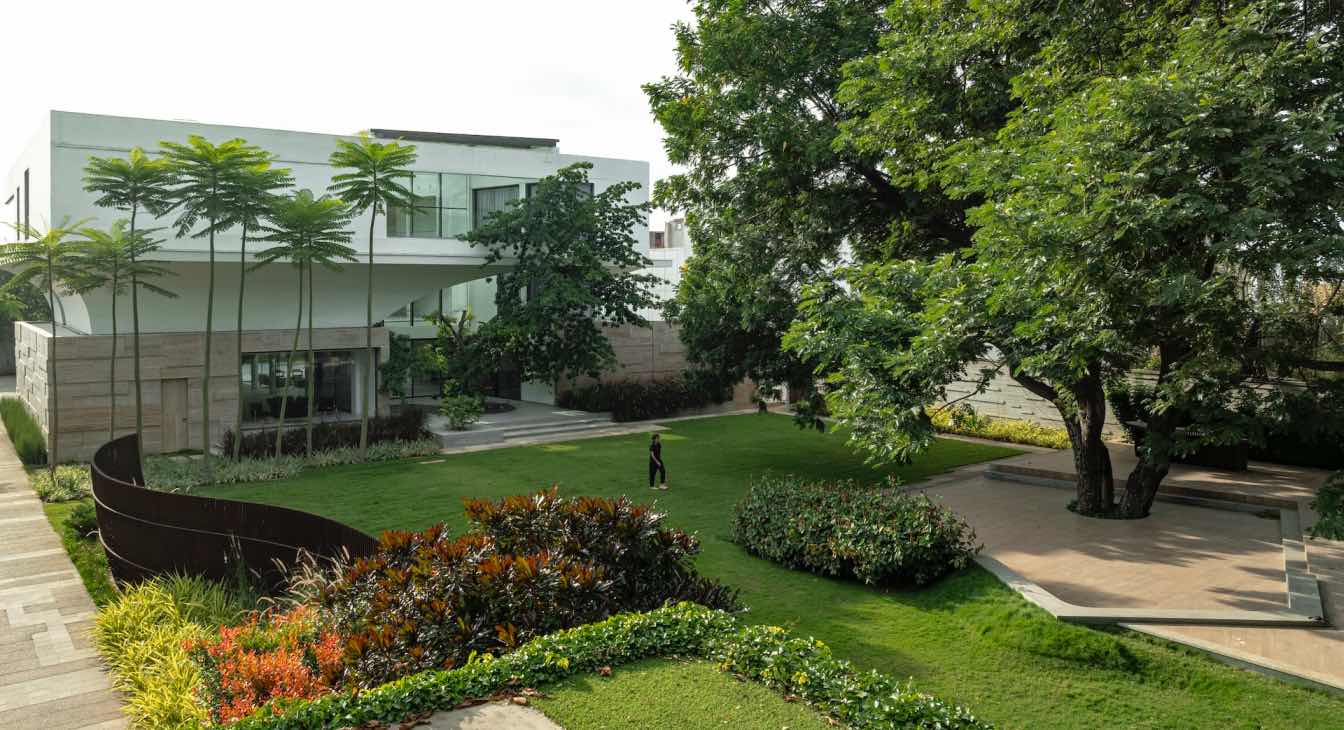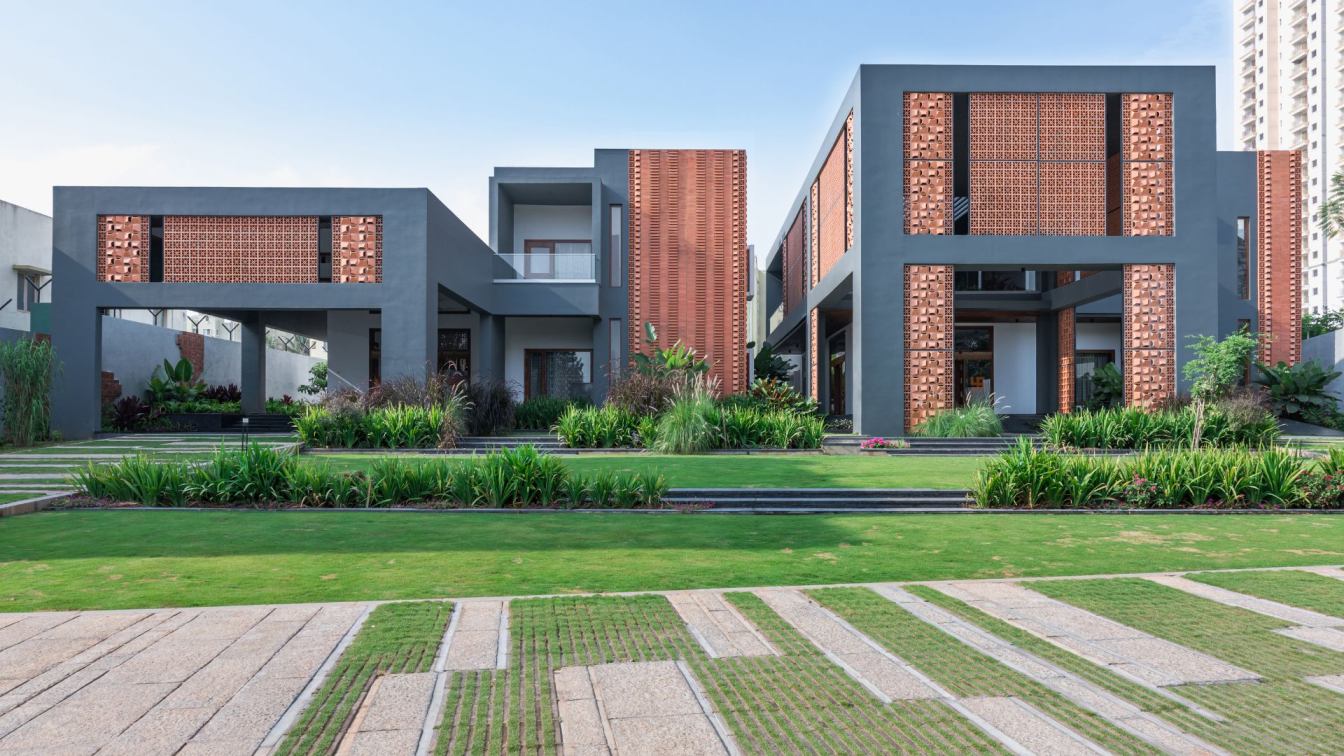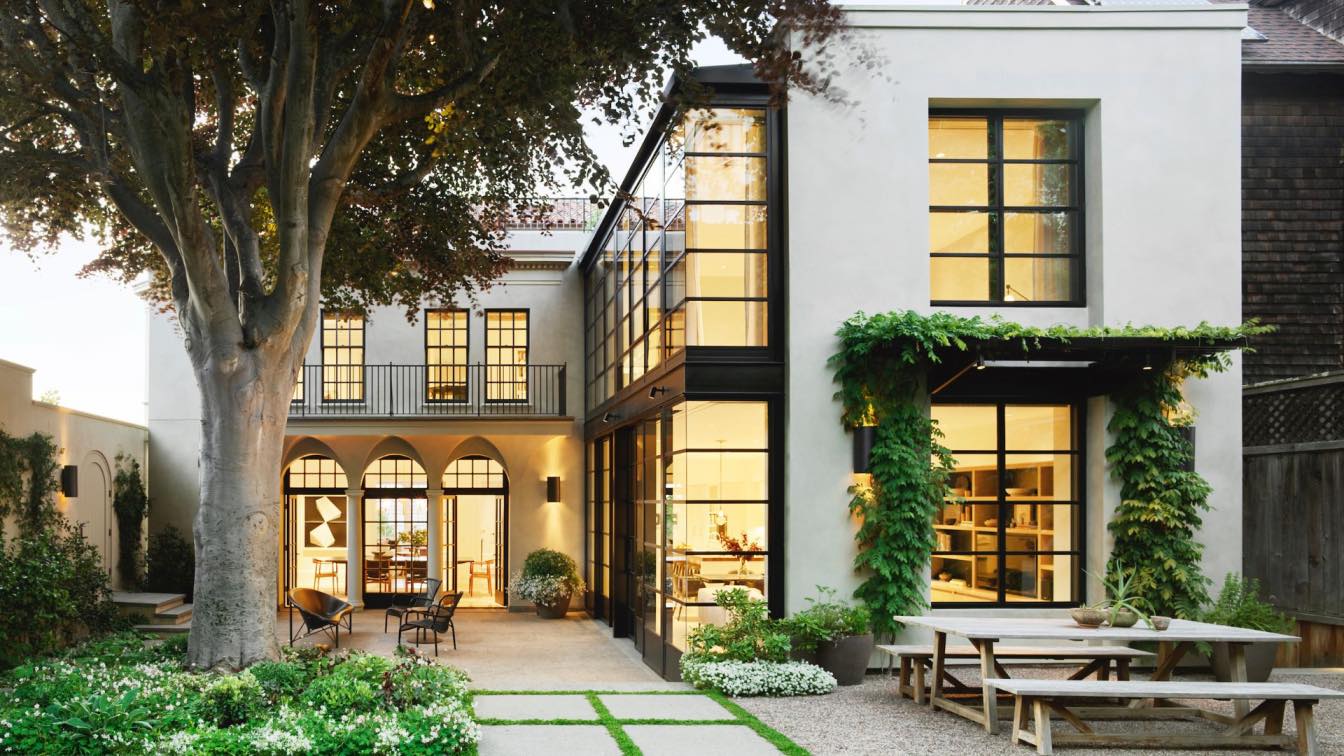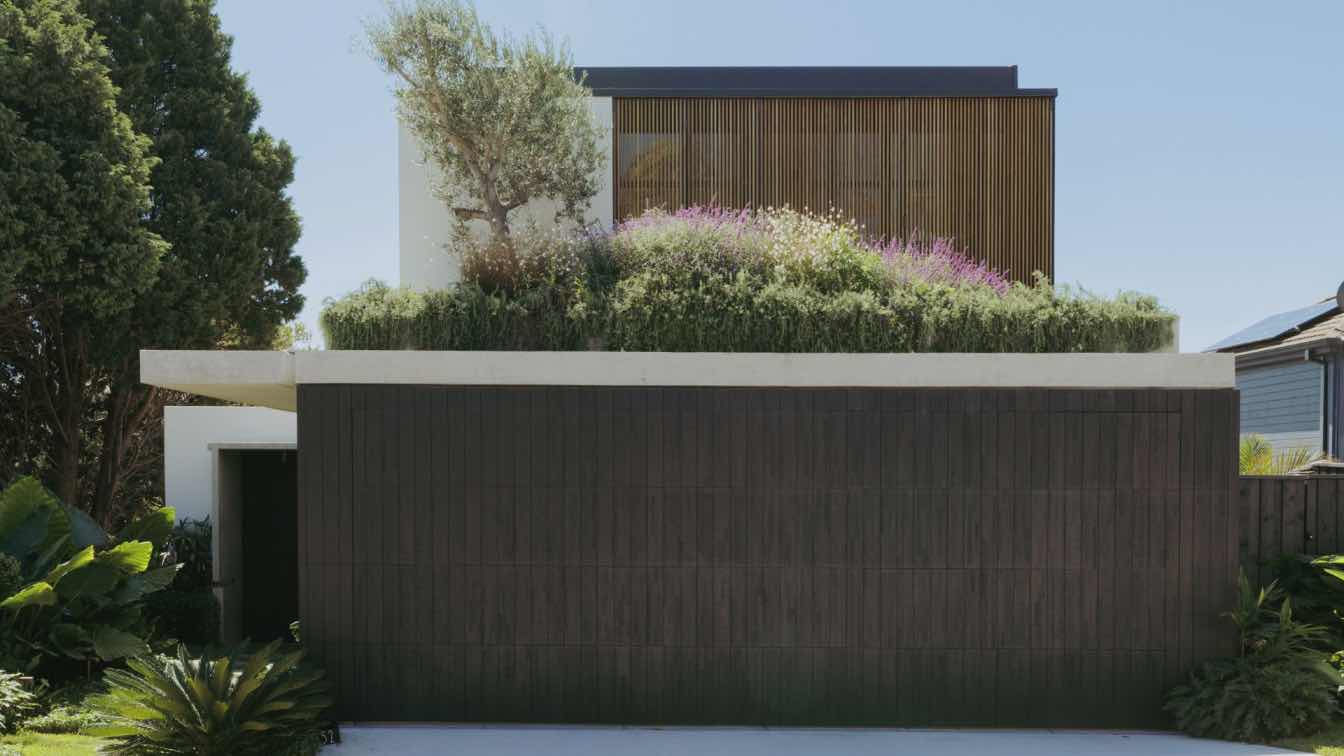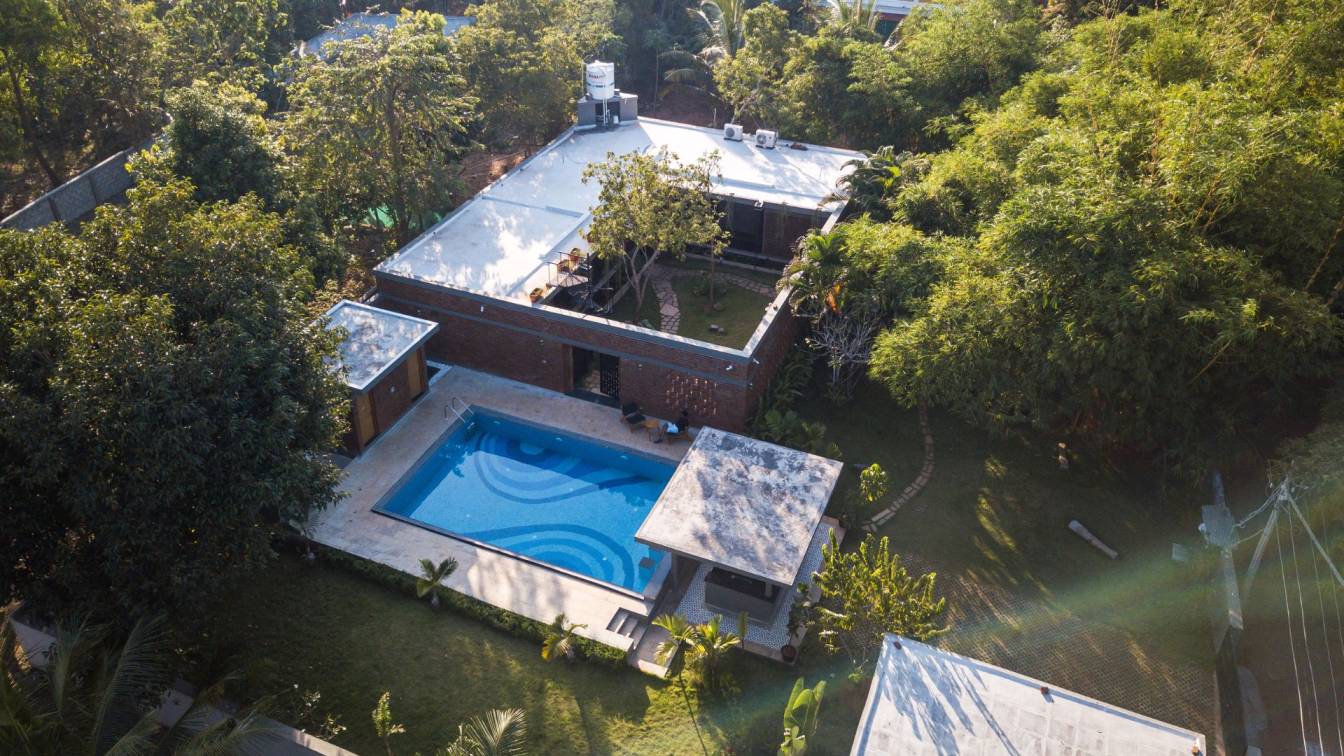PRIYAM: A Minimalist Landscape Retreat
In the heart of a bustling urban setting, where space is at a premium and every square foot is coveted, PRIYAM emerges as a testament to minimalist design and strategic spatial planning. Landscape architect Sowmya Lakhamraju of Kiasma Studio, alongside the international architectural firm A01 Architects and interior designer Aamir Sharma of Aamir and Hameeda, has crafted PRIYAM as a striking example of how thoughtful design can transcend geographical and stylistic boundaries. This residence, which began its journey in 2011 and weathered the interruptions of the pandemic, showcases a seamless integration of form and function, where the landscape serves not merely as a backdrop but as an integral component of the home’s identity.
Conceptual Approach: Minimalism Meets Functionality
Kiasma Studio’s design philosophy for PRIYAM is deeply rooted in the principles of minimalism, yet it navigates the challenge of creating functional outdoor spaces with remarkable finesse. The client’s brief was clear: maintain a minimalist aesthetic while preserving the expansive feel of the plot, situated in a densely populated neighborhood. This requirement posed a dual challenge: ensuring the outdoor spaces could accommodate social gatherings without compromising the minimalist ethos.
The landscape design achieves this balance by focusing on the natural elements of the site rather than imposing additional structures. The high-density context necessitated a thoughtful approach to space utilisation, leading to the creation of versatile outdoor areas that serve multiple functions. The design integrates zones for relaxation and socialisation, including areas for yoga, brunches, and informal gatherings, all within a framework that respects the site's inherent constraints.

Harmonising with Nature
One of the most distinctive features of PRIYAM’s landscape is the integration of outdoor seating under 100-year-old trees. These mature trees not only provide a canopy of shade but also guide the zoning of the landscape. The design team’s approach was to let the existing trees dictate the layout, avoiding the need for additional structures such as pergolas. This decision aligns with the clients’ appreciation for nature and their desire to keep the outdoor spaces unobstructed.
A clean, multifunctional deck complements these trees, offering a flexible area for yoga sessions, family gatherings, and social events. A custom-made service counter enhances the deck’s functionality, allowing for easy food service during gatherings. This design approach exemplifies how nature and functionality can coexist within a minimalist framework, creating a space that is both practical and aesthetically pleasing.
The handcrafted stone bench, designed to reflect the sky, is a standout feature in PRIYAM’s landscape. This unique element emerged from Kiasma Studio’s passion for creating reflective sculptures that add depth and dimension to outdoor spaces. The bench’s surface captures and mirrors the surrounding environment, including the trees and sky, introducing a dynamic and ever-changing visual element.
This reflective quality not only enhances the bench’s aesthetic appeal but also enriches the overall outdoor experience. As visitors interact with the space, they engage with a living artwork that shifts with the changing light and weather, creating a constantly evolving interaction with nature.

The integration of invisible metal screens as privacy barriers is another innovative aspect of PRIYAM’s landscape design. Traditional privacy screens, whether walls or dense foliage, would have disrupted the minimalist aesthetic and the open feel of the space. Instead, Kiasma Studio opted for a subtle metal screen that becomes almost invisible at certain angles.
This design choice serves multiple functions: it provides necessary privacy between the garden and the parking area while maintaining an open and airy feel. The screen’s ethereal quality makes it a conversation piece and a visual delight, aligning with the timeless and unobtrusive nature of the overall design.
The courtyard space beneath the 80-year-old cannonball tree is a masterful example of how design can enhance the natural beauty of its surroundings. This area not only highlights the striking structure of the tree but also creates a serene environment for contemplation and relaxation. The tree’s unique characteristics, including its fragrant flowers and textured bark, add sensory dimensions to the space.
The courtyard is designed to be a multifunctional area where residents can enjoy a morning coffee, read a book, or simply savor the fragrance of the cannonball tree. This thoughtful integration of the natural elements ensures that the courtyard serves as a tranquil retreat, seamlessly connecting the indoor and outdoor experiences.

Adapting to the Pandemic: Challenges and Solutions
The design and execution of PRIYAM faced significant challenges due to the pandemic, which introduced disruptions and constraints. Originally initiated in 2011, the project resumed work during the pandemic, requiring adaptations in materials sourcing and construction practices. Kiasma Studio’s response involved using local materials and working with existing palettes to mitigate supply chain issues.
This period of uncertainty underscored the importance of flexibility and resourcefulness in design. The team’s ability to adapt and work with local resources not only ensured the project’s continuation but also reflected a commitment to sustainability and resilience.
Sustainability and Complementarity
Sustainability is a core value reflected in PRIYAM’s landscape design. The use of locally sourced materials and the preservation of existing trees underscore a commitment to environmental responsibility. By integrating these elements into the design, Kiasma Studio adheres to a broader philosophy of minimal intervention and maximum impact.
The landscape complements the house’s architecture by creating a harmonious environment that enhances the overall experience of the property. The design emphasises wide open spaces and selective foliage to provide privacy while maintaining the sense of scale and openness. This inward-looking approach ensures that the landscape serves as a retreat and a complement to the architectural form, offering a serene and private haven within the urban context.
